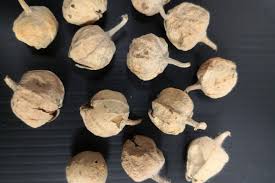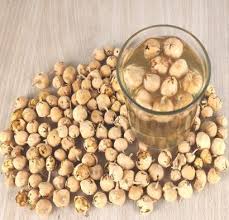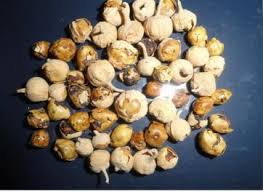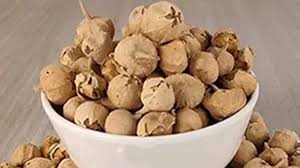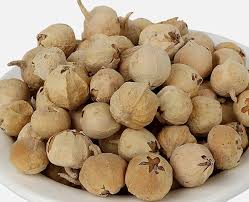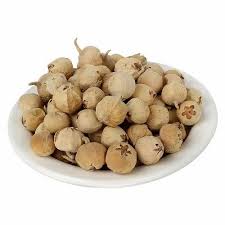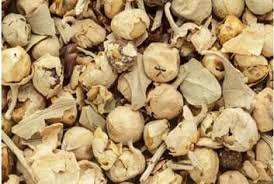
Everything You Need to Know About Paneer Phool
In today’s health-conscious world, more and more people are returning to their roots—seeking healing through ancient herbs and natural remedies. Among the many powerful herbs rooted in Indian Ayurvedic tradition, Paneer Phool (also known as Paneer Dodi or Withania coagulans) is gaining massive attention for its blood sugar-regulating, detoxifying, and anti-inflammatory properties.
Once a household remedy used by elders in rural India, Paneer Phool is now trending across herbal wellness platforms and is being studied by modern researchers for its therapeutic value. If you’ve ever wondered what this unique cotton-like flower can do for your health, this comprehensive guide covers everything you need to know about Paneer Phool—from its history and health benefits to usage, precautions, and integration into your daily routine.
This article is crafted for readers of Dirghaanshi—a platform dedicated to promoting natural, holistic, and Ayurvedic health solutions. Let’s dive into the fascinating world of this multi-purpose Ayurvedic herb.
Long Description
What is Paneer Phool?
Botanical Name: Withania coagulans
Common Names: Paneer Dodi, Paneer Phool, Indian Rennet
Part Used: Dried flowers (resembles small cotton balls)
Ayurvedic Classification:
Rasa (Taste): Tikta (bitter)
Virya (Potency): Sheeta (cooling)
Karma (Action): Antidiabetic, digestive stimulant, anti-inflammatory
Paneer Phool is a traditional medicinal herb native to India and surrounding regions. It belongs to the same plant family as Ashwagandha (Solanaceae) and is revered in Ayurveda for its wide range of therapeutic uses, particularly for managing blood sugar, digestion, liver detox, and inflammation.
Paneer Phool in Ayurveda
Ayurveda classifies Paneer Phool as:
Tikta Rasa – bitter taste helps cleanse the system and balance Pitta
Sheeta Virya – cooling nature pacifies excess heat in the body
Laghu Guna – light for digestion, aids in metabolism
Karma: Balances Kapha and Pitta, making it excellent for diabetic and inflammatory conditions
It is often used in herbal formulations, especially for lifestyle disorders and seasonal detox programs.
Health Benefits of Paneer Phool
- Natural Blood Sugar Regulation
Paneer Phool is one of the most respected Ayurvedic herbs for managing Type 2 Diabetes. It helps in:
Stimulating insulin secretion from the pancreas
Improving glucose uptake in cells
Reducing insulin resistance
Preventing sugar spikes after meals
This makes it a natural, side-effect-free alternative for those managing diabetes and prediabetes.
- Detoxifies Liver and Supports Digestion
The liver plays a key role in metabolizing sugar, fats, and toxins. Paneer Phool:
Enhances liver enzyme function
Stimulates bile production
Helps detoxify blood
Improves appetite and digestion
A healthy liver is essential for maintaining metabolic balance.
- Reduces Inflammation and Oxidative Stress
Chronic inflammation is the root cause of many diseases. Paneer Phool contains:
Withanolides and flavonoids with anti-inflammatory properties
Compounds that neutralize free radicals
Natural support for those with joint pain, fatigue, or autoimmune symptoms
- Improves Kidney Function and Urine Output
Paneer Phool has a mild diuretic effect, which helps:
Eliminate excess water retention
Flush out toxins through the urinary system
Reduce bloating and swelling
This also indirectly benefits people with blood pressure and metabolic disorders.
- Enhances Skin and Hair Health
By detoxifying the liver and purifying the blood, Paneer Phool also supports:
Clearer, acne-free skin
Reduced skin inflammation
Overall better skin tone and glow
Scientific Research and Studies
Modern studies validate Paneer Phool’s traditional use:
Pharmacological studies have shown its effectiveness in reducing blood glucose in animal models.
In vitro and in vivo tests show its hepatoprotective (liver-protecting) and antioxidant properties.
Researchers are exploring its potential in managing metabolic syndrome and insulin resistance.
These findings help explain its growing popularity in natural health circles worldwide.
How to Use Paneer Phool
- Paneer Phool Water (Decoction)
Method:
Soak 7–10 dried flowers in 1 glass of water overnight
In the morning, mash and strain the water
Drink on empty stomach daily
Benefits:
Best for blood sugar management, liver support, and detox
- Paneer Phool Powder
Take ½ tsp with warm water twice a day
Can also be added to herbal tea or kadha
Tip: Combine with Methi or Jamun powder for enhanced diabetic support
- Capsules or Tablets
Available in Ayurvedic stores and online
Convenient for those with a busy lifestyle
Follow dosage as directed on the product or by your Ayurvedic doctor
Who Should Use Paneer Phool?
Ideal for:
Type 2 Diabetics
Individuals with poor digestion and bloating
People with sluggish liver or toxin buildup
Those doing seasonal detox or weight loss programs
Anyone looking to strengthen metabolism naturally
Precautions
Not recommended during pregnancy or breastfeeding without medical guidance
If taking insulin or diabetes medicine, monitor sugar levels carefully
Start with a small dose and observe your body’s response
Always source from a trusted Ayurvedic supplier to ensure purity
Why Paneer Phool Is Trending
With rising lifestyle diseases, people are searching for natural and side-effect-free alternatives. Paneer Phool has become popular due to:
Google search spikes in terms like “Paneer Dodi for diabetes”
Social media trends showcasing its health benefits
Inclusion in Ayurvedic diabetes kits and detox programs
Word-of-mouth popularity in wellness communities
Dirghaanshi’s Approach to Herbal Wellness
At Dirghaanshi, we bring you carefully researched information and responsibly sourced Ayurvedic herbs like Paneer Phool. We believe in healing through natural methods and promoting a balanced, holistic lifestyle that supports long-term health.
Our goals:
Educate the public on safe and effective Jadi Buti
Encourage natural solutions over synthetic dependency
Promote seasonal and dosha-based wellness practices
Paneer Phool reflects our mission to preserve Ayurvedic knowledge and make it relevant to modern needs.
Frequently Asked Questions
Q: Can I take Paneer Phool daily?
Yes, it is safe to take daily in moderation. Monitor health metrics like blood sugar or digestion.
Q: How long before results show?
You may see initial changes in 2–3 weeks, especially in digestion and energy levels. Blood sugar effects may take 4–6 weeks.
Q: Can I mix it with other herbs?
Yes. It works well with herbs like Methi, Jamun, Amla, and Neem.
Conclusion
Paneer Phool is a powerful Ayurvedic herb that has stood the test of time. Whether you want to manage blood sugar, detox your liver, improve digestion, or simply support your overall wellness naturally, Paneer Phool can be a trusted ally in your herbal healing journey.
By incorporating it into your daily routine, you embrace the wisdom of Ayurveda and give your body the support it needs to function optimally. As search trends, expert recommendations, and user experiences show, Paneer Phool is more than just a herb—it’s a wellness revolution in a flower.
Start your journey toward holistic health today, with guidance and authentic information from Dirghaanshi.



